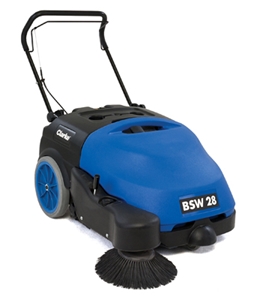This article was originally published on Clean Link.
Popular user-review websites such as Yelp have put diners in the driver’s seat when it comes to identifying restaurant issues. Contributing more than 39 million reviews, “Yelpers” can make or break a restaurant’s reputation, frequently identifying issues with poor service, food quality or cleanliness. To help restaurants maintain a positive online reputation, Cintas Corporation released what online reviewers have identified as five of the top dirtiest areas in a restaurant.
According to popular online review sites, the top five dirtiest areas in a restaurant include:
1. Floors. One of the first things patrons see when they walk into a restaurant is the floor. According to a recent consumer poll, a dirty floor could lead 68 percent of customers to immediately exit the facility — never to return. From dirt and debris to discolored grout lines and carpet stains, several different factors can make a restaurant floor “dirty.”
One reviewer of a major restaurant chain located in Chicago reported: “[This restaurant] has the appearance of being clean due to style, but is actually pretty dirty. The floor has crumbs and dirt all over it, for example.”
To combat dirt and stains, implement a floor care program that focuses on deep cleaning, protecting and maintaining floor surfaces. Whether restaurant floors are covered by carpet or ceramic tiles, a floor care program that involves these three steps and uses mats to contain dirt will keep surfaces clean over an extended period of time, ensuring that your guests think “clean” when they look down.
2. Restrooms. Reports of dirt and debris, unflushed toilets, under-stocked paper goods and general malodors are frequent occurrences within online restaurant reviews. In fact, some users avoid restrooms – or the restaurant – altogether because of restroom filth. A reviewer of a Washington D.C.-based Chinese restaurant stated, “I had to use the restroom, but was too scared just from a glimpse of one of them.”
To prevent this scenario, implement an ongoing restroom care program that not only ensures that restrooms are always properly stocked, but that they are also regularly deep cleaned. In addition to daily maintenance, integrate a deep cleaning program to remove organic soils that regular mops and brushes can’t remove, but can cause odors.
3. Tables. Remnants from meals, displaced napkins and general dirt left on and around tables can make guests feel unwelcome or leave them with a negative impression of the restaurant. This is what prevented a reviewer of a Miami-based fast food Mexican restaurant from giving the restaurant a better rating. He noted, “I would have given four stars, but I noticed a few tables were dirty and the little bar at which we sat I had to clean myself prior to sitting down.”
To avoid giving guests a “bad taste” in your restaurant, designate a porter to handle front of the house cleaning issues, such as dirty tables or drink spills. From removing trash to spraying down tables with a general purpose cleaner, this individual’s primary responsibility should be to keep the dining room clean and ready for guests.
4. Staff. Unkempt staff can be an immediate turn-off to restaurant patrons. From uniform stains to poor personal grooming, the appearance of restaurant employees can be an indicator of the restaurant’s overall commitment to cleanliness. For example, a reviewer of a major upscale steak house chain in New York City noted, “His uniform was kind of dirty and I didn't want to imagine if the restaurant was cleaned or not.”
In addition to enforcing good personal hygiene, ensure that staff members are dressed in an apparel program that reflects the brand standard of the restaurant. When a new employee begins work, fit them for correct sizing and immediately remove stained or worn uniforms from operation.
5. Kitchen. For restaurants that open the kitchen to guest viewing or those that operate behind closed doors, kitchen cleanliness is imperative in any foodservice operation. Reviewers will be the first to applaud kitchen cleanliness or highlight issues. A reviewer of a Chinese restaurant in Seattle noted, “I took off one star for this place because I sat near the entry to their kitchen once … I saw how dirty it was.”
From prep areas to floors, keep kitchen surfaces clean and odor free by sanitizing regularly and deep cleaning on a regular basis. In addition, a drain line maintenance program can help reduce odors emanating from restaurant drains and limit food sources for insects such as fruit flies, which can indicate a lack of attention to cleanliness.
Read the full article
here to learn more.


